Discovering white flatworms, seemingly appearing out of thin water in your fish tank, can trigger panic among aquarists. Planaria infestations are not uncommon, but dealing promptly with these intruders is crucial. In this comprehensive guide, I’ll walk you through the identification and eradication of Planaria worms in your aquarium, offering practical methods and insights garnered from my own experiences in combating this nuisance.

I’ve found that a population of planaria flatworms will thrive in an aquarium that lacks their natural predators.
Most often my shrimp tanks would be affected but, sometimes, understocked tanks with nano fish would also support a Planaria infestation.
In such cases, the best way to rid your tank of the pest is by using a worm trap or a de-wormer.
In my experience, Planarian worms could be harmful to your tank’s livestock and should be dealt with immediately.
So let me help with the identification and eradication of Planaria worms in your aquarium.
How to make sure you’re dealing with Planaria in your aquarium?
Before we continue I need to describe how to identify these pests so that you make sure it’s Planaria you’re dealing with.
Planaria worms are typically white and have flat bodies with distinctive triangular heads. The spade-like head is visible to the naked eye and has two eyespots on it.
The eyespots can be better seen with a magnifying glass.
I’ve seen adult planarian worms that sometimes develop a pink color but that is relatively rare.

A mature freshwater planarian will range between 1 and 1.5 inches in size, which equals 2.54 to 3.8 cm.
However, adult planaria will often remain around 1 inch (2.54 cm) unless there’s an abundance of food in your aquarium.
These worms are most active during the night, which is why most fish keepers find out about the infestation early in the morning.

Though they can lay eggs, Planaria prefer to reproduce asexually, which means that just a single worm can start a colony. I should also point out that they possess unique regeneration abilities.
If you were to squish or cut one Planarian worm in half then you’d end up with two healthy individual worms.
I find it ironic that these worms are difficult to find in the wild but are a common nuisance in our aquariums.
Author’s note: Planaria have some key traits that you can identify to tell them apart from the other two common types of tiny white worms that can be found in freshwater aquariums.
For example:
Planaria will not float or wiggle actively in comparison to the more common Detritus worms.
Planarian flatworms prefer to slowly glide on surfaces such as the substrate and, sometimes, the tank’s glass.
Also, they grow significantly larger than the Rhabdocoela flatworms – another type of aquarium flatworm.
Anyhow, visit the aforementioned link to compare all of the differences between Planaria, Rhabdocoela, and Detritus nematodes.
Are planaria worms harmful to shrimp and fish?
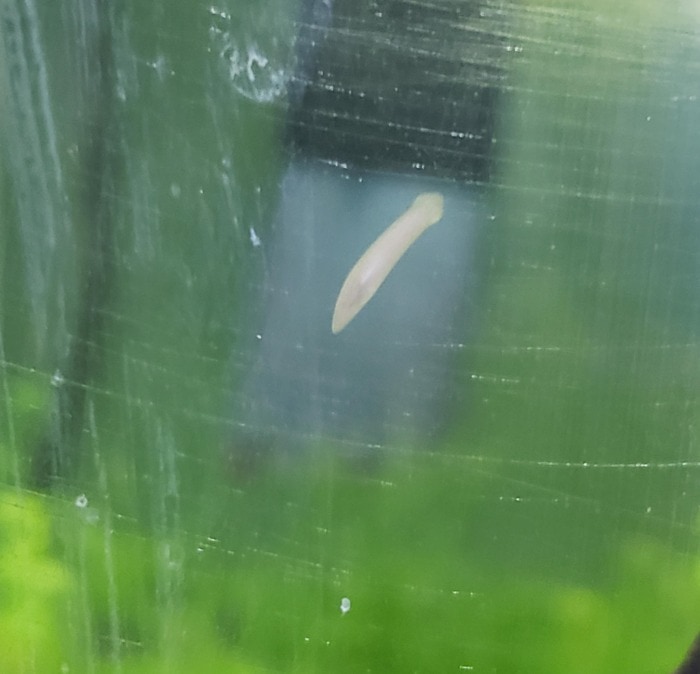
Planaria worms feed on meat and may actively hunt for prey if there’s not enough leftover food in your aquarium.
Freshwater snails, baby shrimp, and even adult molting shrimp may all fall prey to these carnivorous worms. Planaria also feast on the eggs of shrimp and snails.
Fish are not under threat of getting killed by Planarians and some species can be predators of the flatworm.
Most carnivorous freshwater fish would eat Planaria worms and control their population if food is scarce in your tank. Anyway, I’ve found reports of shrimp keepers who claim that Planaria leave a toxic trail behind them.
Supposedly, any shrimp that would walk on this trail would get paralyzed and die.
I did some research on aquatic Planaria and it turns out that they do leave a trail behind.
However, the trail is only used to help with gliding on surfaces underwater and nothing more.
While searching for more information I found a video suggesting that Planaria could kill and immobilize a shrimp on the move:
After seeing this, I had to dig deeper and find out whether these flatworms use some kind of potent toxin to attack prey.
My research showed that some marine and a couple of terrestrial Planaria flatworms produce a toxin called Tetrodotoxin. I was almost convinced that the very potent Tetrodotoxin is an ideal explanation of how Planaria would kill shrimp and snails on the go.
However, my research showed that freshwater Planaria do not produce any toxins like Tetrodotoxin that are found in some marine species.
Also, there was no study suggesting that freshwater Planarian worms produce toxins at all.
Anyhow, after researching some more I’ve found something that could potentially explain why Planaria are so harmful to adult shrimp and snails:
All Planaria have a tube-like mouth located on their belly, called pharynx.
They use the pharynx to secrete digestive enzymes that break down food before it’s ready for consumption. This means that during feeding a Planarian worm can start digesting a shrimp that’s still alive.
This could be enough to wreck the insides of the shrimp or snail and kill it.
I know all of this may sound concerning so let me explain how to get rid of this pest.
How can you rid your tank of Planaria?
Since planaria worms are sneaky and reproduce easily it may seem difficult to remove them from your aquarium.
Here are a few methods that I’ve successfully used to completely eradicate Planaria from my tanks:
First, let me point out that you could always add predatory fish to the system but that is not always a practical solution in a shrimp tank. Even the smallest carnivorous fish could be disastrous to your shrimp colony as well as the Planaria.
That being said, some fish that are known to eat Planaria are:
- Native North American darters and shiners;
- Goldfish;
- Angelfish;
- Guppies;
- Wild-caught Betta fish;
- Gouramis;
- Mollies.
Anyway, there are two other flatworm removal methods that I would not classify as “hit or miss”.
To rid your aquarium of Planaria worms for good you can try the following:
- Getting a commercial Worm Trap;
- Creating a DIY Planaria trap;
- Using a worm killer.
All of these methods would eliminate planarians from your tank but the one I prefer is creating my own Planaria trap.
It requires almost no work on your part and it is safe for shrimp and snails.
Let me show you how you can execute all three methods, starting with my favorite one.
1. Use a Worm Trap to export the flatworms from the tank.

I like the concept of a worm trap because it’s very simple and effective.
Here’s how a worm trap works:
- You put bait in a container.
- The worms enter the container to feed.
- You remove the container and therefore export the worms from your tank.
The thing I like the most about worm traps is that I don’t need to check on the container regularly.
Planaria are nocturnal hunters and will actively feed at night.
So what I do is leave the container in the fish tank before lights out and get it out the next morning.
Anyhow, you could get a commercial worm trap but they are rather small and need a lot of cycles to be effective. However, making the Planaria trap yourself takes less than a minute.
It’s pretty straightforward and it does not require special tools.
Follow these steps to build a DIY worm trap that can naturally remove Planaria from your tank:
- Put flakes for carnivorous fish in a 16.9 oz plastic bottle.
- Make four holes on the bottom of the bottle by using a pin or a needle.
- Tighten the cap.

After that you just need to set up the planaria trap:
- Immerse the bottle in your aquarium and wait until it fills with water and sinks. Set the trap in the evening and remove it the next morning when it’s likely filled with Planaria.
- Leave the bottle straight and bury its bottom into the substrate with a twisting motion.
Author’s note: You can use raw chicken or fish as bait, but I prefer flakes because they seem less messy. I recommend using just 1 or 2 flakes, as it would be enough to spark the interest of Planaria.
Also, don’t worry about the needle holes being too small, and don’t try to forcefully widen them.
Planaria will easily get through a needle hole.
Anyhow, set up your Planaria trap in the evening and wait until the next morning. If you don’t see many worms in the bottle, wait a total of 24 hours.
The day after the worm trap was set, it will likely be filled with Planaria to the point of looking disturbing.
This is good news, however, because it means that you’ve done everything correctly!
Gather some strength and remove the bottle from the tank, exporting all of the captured worms with it.
Don’t dispose of the Planarian worms down the drain or your toilet. These aquatic flatworms can be invasive and you certainly don’t want them in your town’s water facility.
Dispose of the captured Planaria on the dry ground outdoors where they will likely get eaten by other animals or wither away.
Repeating this process 3 to 4 times typically eliminates all of the Planaria in a heavily infested aquarium.
2. Use a worm killer.
Dewormers, or worm killers, can be used to rid your tank of Planaria in about 3 days.
One of the more popular dewormers is Panacur C. Its active ingredient is Fenbendazole which can be fairly effective against Planaria.
Fenbendazole, however, could also harm the more sensitive freshwater snails in your aquarium.
In my experience, this dewormer will be particularly harmful to baby snails, whereas adult ones could survive if they weren’t exposed to it for too long.
What I like about this method, however, is that it’s shrimp-safe.
Anyway, here’s how to use the Panacur C dewormer in your aquarium:
- Use a gram scale to measure out 0.1 grams of powder for every 10 gallons of water in your tank.
- Mix the dosage with a small amount of aquarium water in a cup.
- Remove any carbon media from your tank.
- Pour in the mixture in your aquarium.
- Add the same dosage in 48 hours.
The thing with Panacur C is that it works slowly and at first you’ll still see a lot of Planaria gliding around the tank.
However, in roughly 3 days, which equals two doses, there will be no trace left of the worms.
Author’s note: Since Panacur C is a dog dewormer by definition, it is highly concentrated. This makes it very difficult to measure a dosage without a sensitive gram scale at hand. This is one of the reasons I don’t like this method.
The other Planaria killer that I recommend trying would be No-Planaria. I like this one more because it’s specifically made for aquarium use.
There are clear instructions on the back of the package and the dosing is way less complicated.
No-Planaria is safe for shrimp but may take out some of your snails, so remove those prior to using it.
No-Planaria’s main active ingredient is an extract from the palm tree Betel Nut, which appears to be toxic to most worms, especially Planaria.
I also need to mention one key thing to remember when using this dewormer:
You should not feed your shrimp during the treatment.
Luckily, the treatment lasts about 3 days. Anyway, remove any carbon media or other chemical absorbents like Purigen from your tank and treat it by following the instructions on the label of No-Planaria.
Author’s note: The main disadvantage of using dewormers in your aquarium is the risk of an Ammonia spike after the treatment. If I go ahead and kill all of the Planaria at once, their bodies would remain in the tank. From there on they would start to decompose, releasing Ammonia in the process. What I do to be on the safe side is vacuuming my aquarium’s substrate with something like this immediately after the treatment is over.
By using some sort of siphon vacuum cleaner you’d remove the dead Planaria from your tank before they start rotting. Following these thoughts, it’s why I usually choose the DIY Planaria trap over having to worry about Ammonia levels in my aquarium.
How do planaria worms get into an aquarium?
If you made it this far, then you’re probably still wondering how these nasty parasites got into your aquarium?
After all, you wouldn’t want to repeat the same mistake twice and deal with them again.
Well, just like most other aquarium pests, planaria worms don’t simply appear out of nowhere.
In most cases, they take a ride on aquarium plants and start reproducing once they’re in a proper environment. And despite their amazing regenerative abilities, deadly digestive enzymes and fast growth, they can’t survive without any nutrients.
Nutrients, which, as you’ve probably guessed by now, mostly come from leftover food. Therefore, if you ration the food you give to your aquatic pets you’ll reduce the risk of future planarian infestations. However, the best way to ensure you’ll never have to deal with these parasites is to dip new plants into an alum solution.
Alum or potassium aluminum sulfate, is a chemical compound that’s found in most grocery stores.
It’s often used in home pickling recipes due to its acidity, which seemingly also kills invertebrates.
For the solution, you’ll need to dissolve 1 spoon of alum for every gallon of water you’re going to dip your plants in.
Once the solution is ready, add it to the water container where you’re going to dip your plants.
Finally, place the plants in the container and keep them there for three days.
You can use a liquid fertilizer to prevent the leaves from getting damaged. Note that you should use dechlorinated water since you don’t want to stress your fish once you’re done with the alum bath.
The great thing about this method is that it also destroys pest snails, so you hit two birds with one stone. It’s worth noting that planaria worms can find their way into an aquarium by hitchhiking on snails or fish, in which case there isn’t much you can do in terms of prevention.
My Conclusion
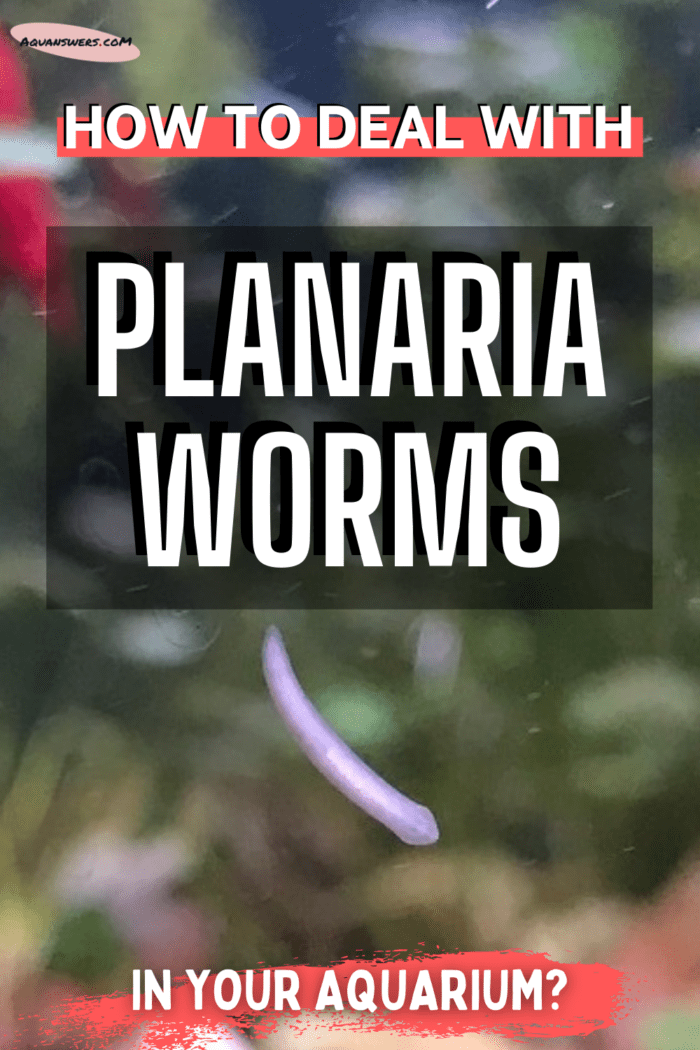
Planaria can be pesky creatures but this is precisely why we should not tolerate them in our aquariums.
When it comes to their removal I would always go with creating my own worm trap over using dewormers.
Share your story in the comments and let me know if my guide was helpful to you or your friends.

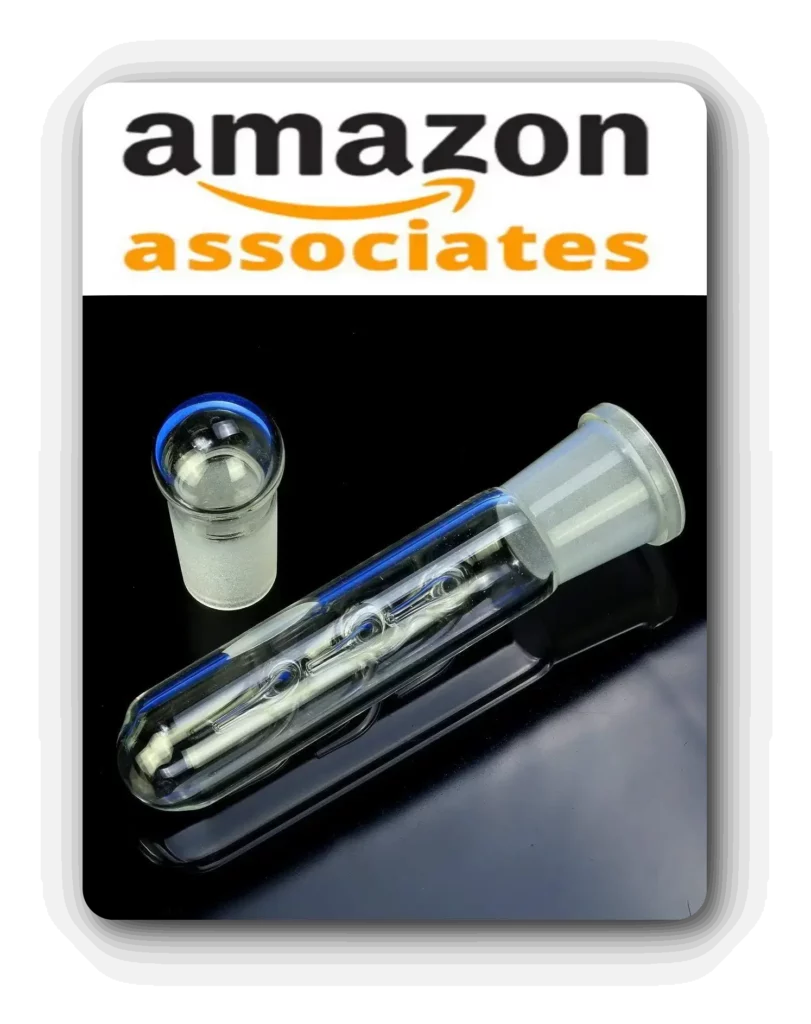

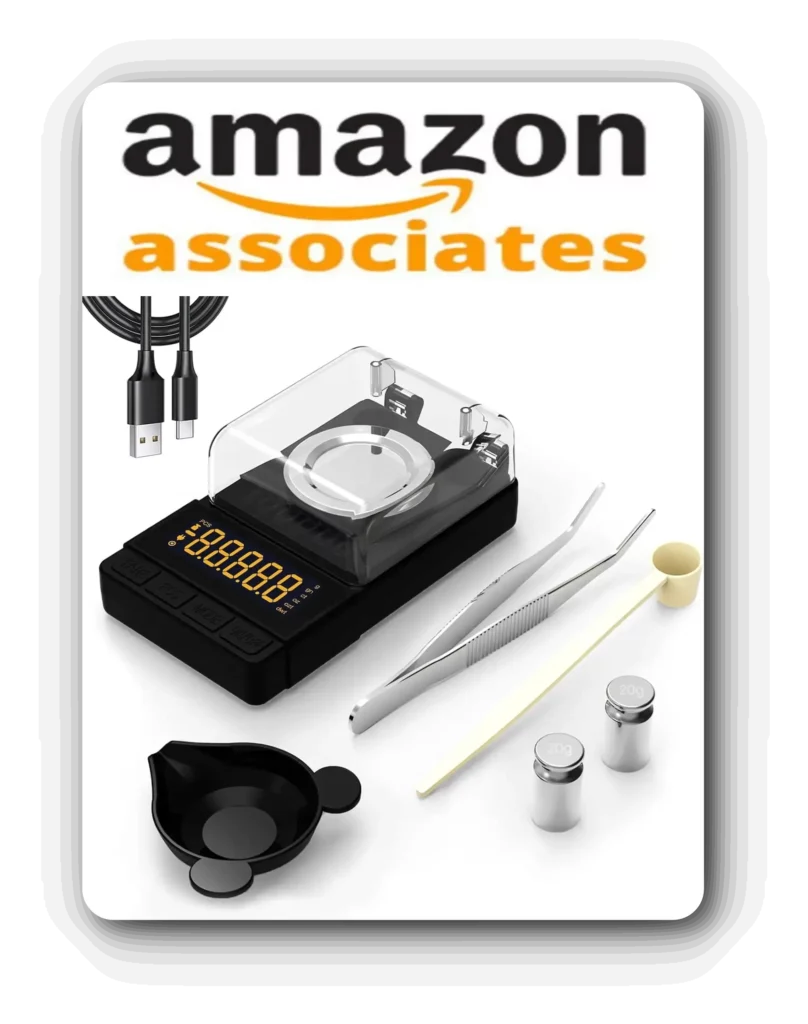

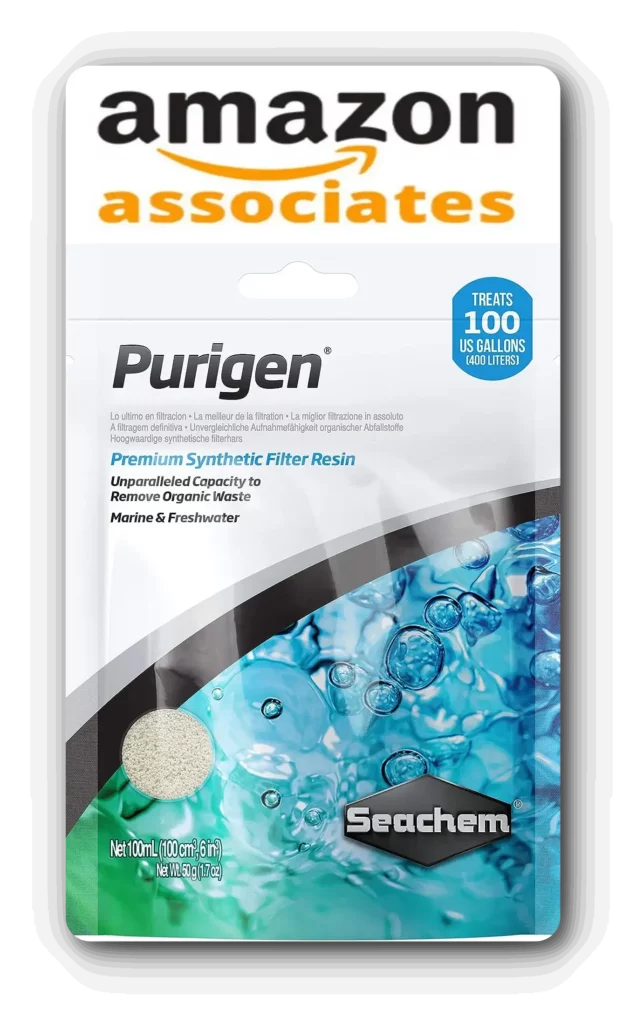

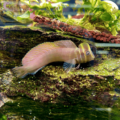

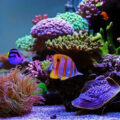


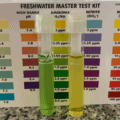
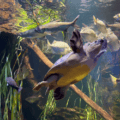
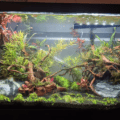

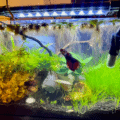
I found these same worms in my 10 gallon shrimp tank. Bought the traps and put some shrimp pellets with no luck overnight. Bought the no Planaria powder and used it over 3 nights. After that I removed all the shrimp (very time consuming). Then I vacuumed the substrate, and did a 50^ water change. Added more fresh substrate, waited a few days and returned the shrimp to the tank. Also got a few endlers to add as i heard they will consume Planaria. So far so good. Now every day when I get home from work they’ll be a dead shrimp. What would you suggest I do?
Glad to have found this – just found planaria in my 14 gal tank with shrimp and nano fish. Ugh. Will try trapping and later will also do the dewormer treatment – just to be sure. But I also cannot really watch ammonia spikes, so lets remove as many of them as possible. They’re actually kind of elegant but I like my shrimp more!
Hey,
Yes, absolutely try the worm trap first. It’s easy maintenance and very effective. Do multiple rounds until no worms are trapped inside if needed.
“Elegant” is one way to put it… Deadly grace.
Good luck,
Momchil
I tried the trap but didn’t get a single worm by the next morning. I double checked and followed the instructions as far as I can tell? Any ideas what went wrong?
Hey Jamie,
Hm… What bait did you use?
I’ve had great success with this method every time I’ve used it. You can try with actual meat but make sure it’s a small piece (preferably cooked, no seasoning).
I don’t have fish flakes so I used some of the food pellets that are for my snails/shrimp. Maybe the smell isn’t right. I’ll try changing the bait.
Go with something meaty next.
Grrr!!! Still no luck. I used a piece of earthworm first and when that didn’t work, I tried the raw chicken. Still nothing. I’ve triple checked everything about the setup and it is just like the article says.
What am I doing wrong?
Woo hoo! Success. I just didn’t wait long enough before. The raw chicken and waiting 24 hours did the trick.
Ah, Jamie, that’s great news! I guess your Planaria were slow to the party. Did you pull out a lot of them? Repeat the trapping for a couple of days to fully export them. I may add waiting 24 hours as a recommendation to the article because of your experience. Thanks for sharing! Weirdly, when I do it, one night is more than enough. Anyway, I’m super happy it turned out fine in the end.
Momchil
Thanks for the detailed article. I have tried a trap before and it helped reduce Planaria, but didn’t completely finish them off, so I’ll try the de-wormer now.
I have a small tank with shrimp, rams horn snails, and small fish. Unfortunately, the tank also has Planaria. I didn’t worry about Planaria for a while thinking it was harmless, but recently I watched a Planaria worm climb on top of an adult cherry-shrimp, the shrimp tried to shake it off for 10-15 seconds, but it didn’t work and the worm moved to the underside of the shrimp. Then within seconds the shrimp appeared paralyzed. It could only move it’s ‘legs’ slightly but the body didn’t move. It looked similar to the video in your article.
I’m sorry about your shrimp. Sounds horrifying to watch it happen. How did things go with the dewormer?